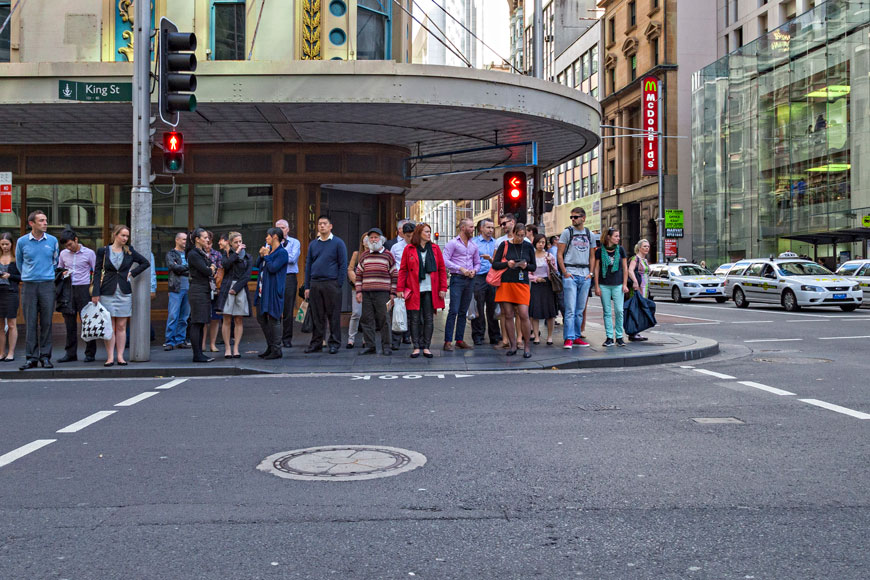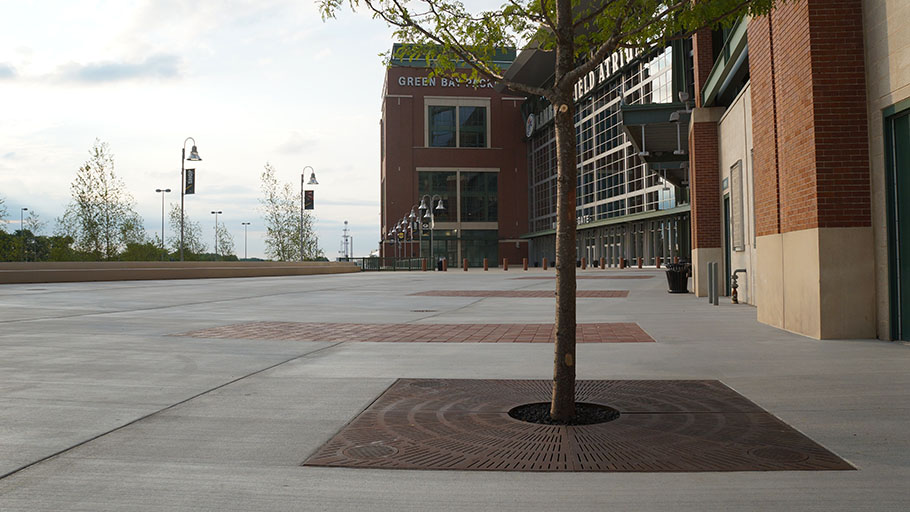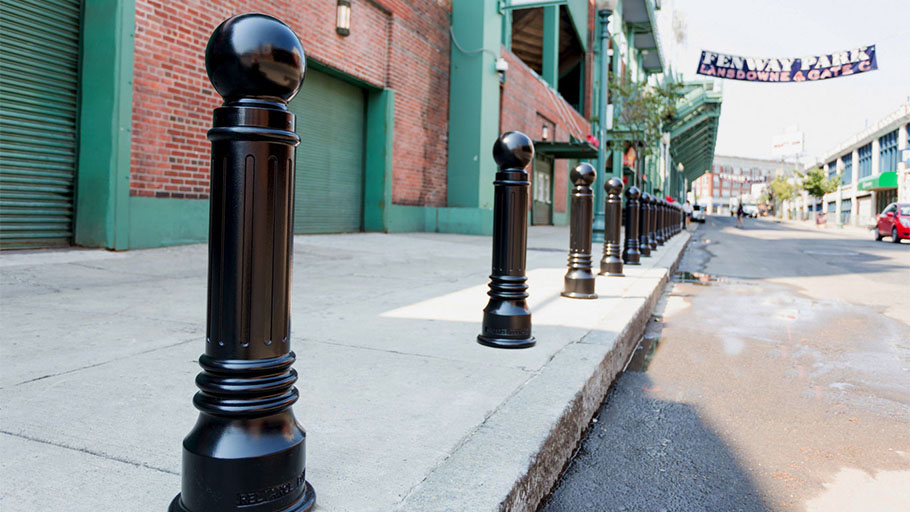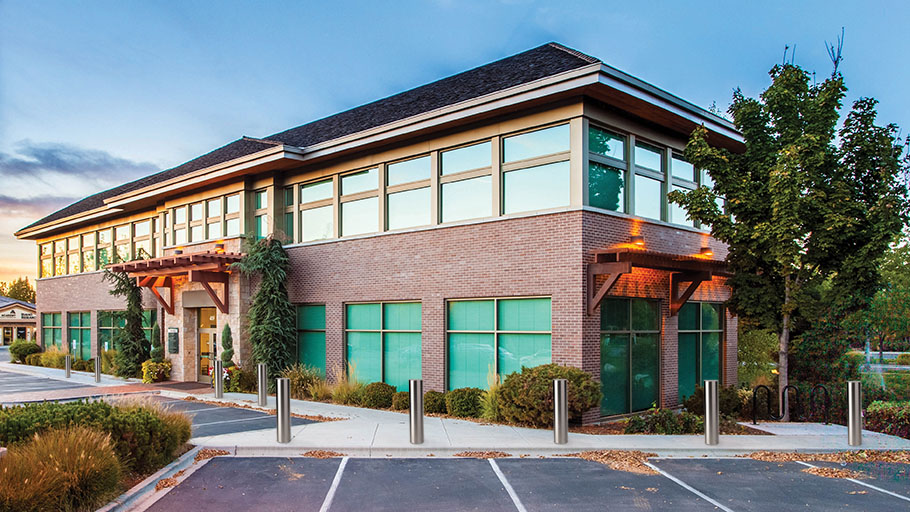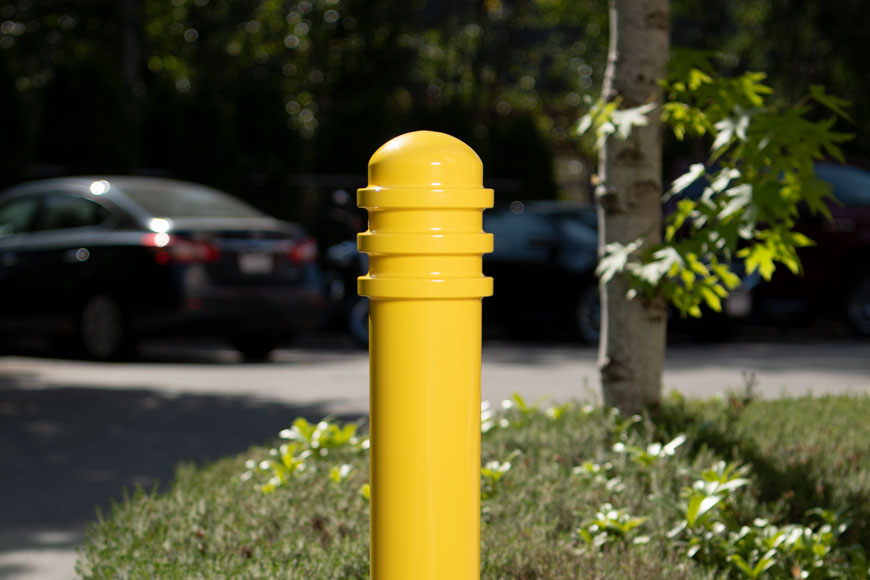How thoughtful design makes cities safer
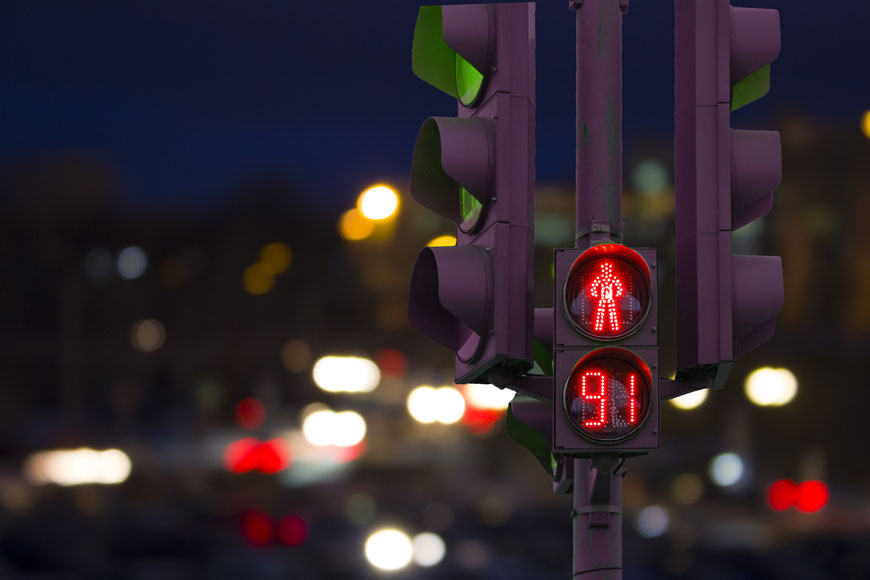
Whether you walk to work, roll to the grocery store in your wheelchair, take your dog for a stroll, or enjoy an afternoon of window shopping, almost everyone is a pedestrian at some point.
The word pedestrian comes from the Latin ped, meaning foot. In urban planning, the term has expanded to include all those who move along sidewalks at a walking or running pace, including those in wheelchairs and scooters. It’s important to consider all the people wending their way through the urban landscape.
Because it’s a concrete jungle out there.
On average, a vehicle runs into a storefront 60 times per day in the United States. In that same 24 hours, an average of 15 people are killed and 192 people injured in traffic crashes. Pedestrian safety is a problem more complicated to solve than simply issuing a reminder to look both ways before crossing the street.

What are common factors in pedestrian accidents?
The biggest threat to pedestrian safety is low visibility. Accidents are most likely to happen when it is dark, or in other challenging conditions like rain, snow, or fog.
Accidents also occur more frequently in certain places. Almost three-quarters of pedestrian fatalities happen mid-block, not at controlled intersections: the final quarter are split between intersections, the road side, and places like parking lots. Municipalities and businesses research what types of accidents are most likely to occur at these different locations, and using this information install infrastructure to improve pedestrian safety, including light-controlled crosswalks, bollards, speed reader boards, and other traffic barriers.
Where do pedestrian/traffic collisions occur?
Midblock
Most accidents happen when people dart out unexpectedly in the middle of a block. This proportion holds both for rural areas, where mid-block crossing is a much more common behavior, and in busy cities that see a higher share of pedestrian-involved accidents. In cities, large numbers of vehicles are often traveling at high speeds along arterial roads, which are often important transit and shopping hubs that draw a lot of foot traffic. Where there are long distances between cross streets, or commuters running for the bus, mid-block collision becomes more likely. Cities also simply have many more people for a driver to watch and predict, and can be lulled by a predictable crowd.
Intersections
The NHTSA traffic safety report notes that 18% of pedestrian traffic accidents happen at intersections. Drivers are gauging vehicles and pedestrians, and are sometimes trying to make it through windows in traffic during left and right turns. If drivers misjudge, pedestrians can get caught up (all too literally) in the mix.
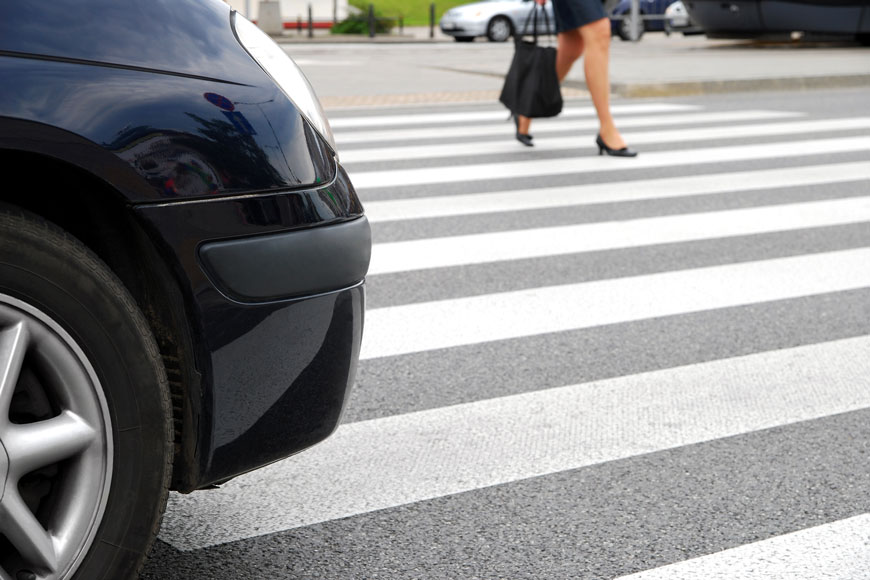
Parking Lots
Though parking lots aren’t (usually) high-speed zones, they are full of pedestrians and vehicles making erratic, unpredictable movements and sharing the road in close proximity. Drivers are watching cars and sometimes many pedestrians moving many directions. Pedestrians sometimes misjudge where a driver seems to be going, and dart behind to be helpful, only to get backed-into. Shopping carts can add an additional layer to navigate.
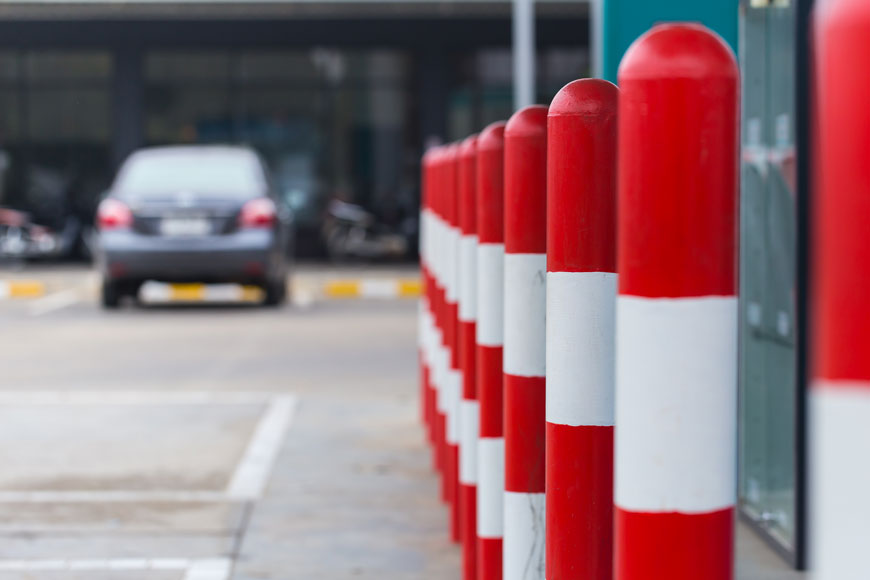
Design provides pedestrian safety
Education is one way to combat these threats, since certain pedestrian behaviors—including darting midblock from between parked cars, running for a bus, or crossing against the light—are ways that pedestrians make themselves vulnerable. Yet education alone is not enough. In a busy city, with people living complicated lives, everything from illness to exhaustion can cause attention to slip even in responsible people. Therefore, urban planners also use environmental design to encourage safety. These approaches fall into several categories.
Marked crosswalks and traffic lanes
Giving pedestrians their own “lane” establishes right-of-way. Commonly, a corner-to-corner crosswalk is drawn between two parallel lines at a controlled intersection. However, zebra crossings are also effective: these draw the eye and announce possible pedestrians at corner-to-corner uncontrolled intersections.
Illumination
With most crashes involving pedestrians and vehicles happening in darkness or other low light conditions, street lighting is a very important part of providing pedestrian safety. Almost all city streets are well illuminated for this reason.
Signals
Signals use lights or noises to control driver and pedestrian behavior. Stop lights at controlled intersections can be timed to support everyone. For example, leading pedestrian intervals can give those on the sidewalk a head start on cars — discouraging cars from hitting the gas to make their turns before pedestrians enter the crosswalk. Countdown signal timers on pedestrian lights help people gauge whether they have time to make the crossing, and the beeping of audible signals can help catch the attention of a cell phone zombie.
Flashing lights at pedestrian-controlled crosswalks has shown to be very effective, especially at night. These signals often hang above a zebra crossing and turn on when their button is pressed.
The meaning of these signals is subject to local interpretation. One traffic law that shows a substantial decrease in pedestrian fatality at intersections is preventing right-turn-on-red. Drivers and pedestrians can miss seeing each other if the driver is trying to beat oncoming traffic in the turn.
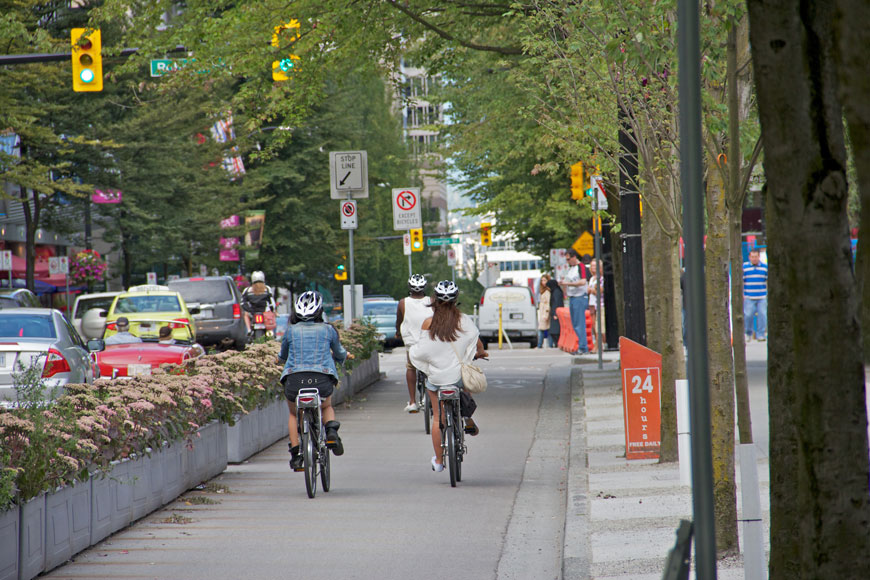
Barriers to restrict pedestrian and vehicle movement
- Bollards: Bollards are short, sometimes decorative iron poles or posts that are used effectively in many traffic guiding or protection situations. In parking lots, brightly colored safety bollards are often used to create separate pedestrian-only spaces. In busy, attractive downtown stretches where bright safety bollards might detract from the aesthetic, architectural bollards linked by chain can be used. These are often deployed at near intersections to discourage people from cutting the corner and putting themselves at risk from a quick-turning vehicle. For additional security, crash-rated bollards can be installed. These have an engineered footing and have been shown to consistently stop vehicles of a particular speed and size.
- Greenbelt and median barriers: Median barriers are placed between lanes of opposing traffic making it impossible for people to jaywalk mid-block. These barriers can be low fences, but in many public spaces, and along bike lanes, greenbelt barriers are becoming preferred: using bushes, planters, or densely packed flower beds to separate traffic in an aesthetically pleasing, street-enhancing way.
Signs
Signs are an important part of traffic control. Research into most effective signage is ongoing! Simplicity of words and symbols, choice of colors, and placement of signs in the visual field all help determine how useful signs are. A good sign needs to be right in view when information is needed.
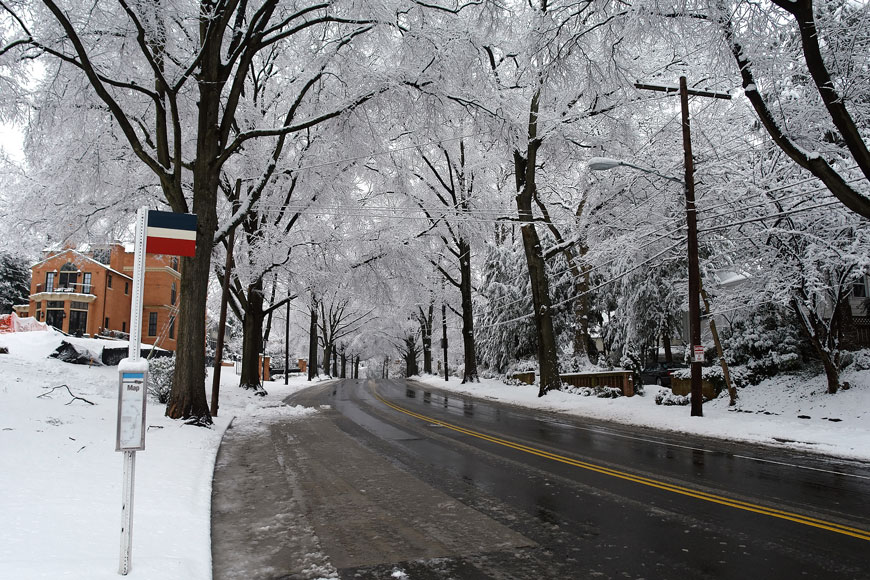
Bus stop location
Bus stops are tricky locations for accident, as there are often pedestrians rushing to get a bus on time. The NHTSA reports that 2% of collisions feature a bus, but this generally does not mean that a person has been struck by the bus itself. Instead, the bus has been a screen preventing other vehicles from seeing a person crossing in front of it. Relocating all transit stops to the far side of intersections generally means pedestrians cross behind, instead of in front, and is safer than either mid-block or before-intersection stop positions.
Provisions for pedestrians with disability
Many traffic adaptations for pedestrians with disability have been well studied and are common-place, but with an aging population more research in this area is ongoing. For those with visual impairment, audible signals are important, and for a grid-system, can be programmed to chirp differently depending on direction and give signal as to orientation as well. Textured crosswalks or raised markings that can be felt by a cane also provide feedback. Those with hearing challenges are often seeking clear signage. For those with mobility issues, having “pedestrian refuges,” especially on long crossings, can be important. A raised island mid-crossing can allow people to take two lights to cross the street instead of one.
Traffic calming
- A neighborhood with many one-way streets discourages drivers from darting from arterial roads to try to find a shortcut.
- Roundabouts slow traffic without bringing it to a stop.
- Speed humps and bumps are far more effective than signs at controlling vehicle speed, since they create an unpleasant driving experience at rates above the posted limit.
- Bulbouts and street narrowing are both designs that help control traffic speed or behavior. A bulbout extends the sidewalk at a corner, causing vehicles to take wider turns. These are sometimes used in conjunction with Martello bollards that return wheels of a close-cutting car to the roadway. Narrowed streets require careful driving to navigate and often provide additional pedestrian space.
Safety is all around
Being a pedestrian is one of the best ways to enjoy the outdoors, whether in an urban center or in a small town. Street level is where we shop, meet people, find a park, stop for a bite or see the sights. Moving at walking pace unlocks the richness that communities have to offer and creates vibrancy and security in the city. However, to keep this pedestrian vitality safe, engineers, urban planners, and architects constantly create and install infrastructure of varying subtlety.
So next time you’re out walking around, keep one eye on the landscape for pedestrian protection infrastructure — it’s everywhere. Take a second to appreciate the style and placement of that bollard; the button that stops traffic when you need to cross the road; and the greenbelt preventing you from jaywalking mid-block.
